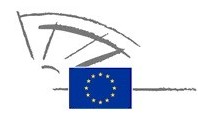The Commission Vice‑President for Values and Transparency, Věra Jourová, recently said that most bureaucracy originates in the Member States(1). She said that ‘we ourselves are complicating the use of EU funds’ and that the Slovak Government has one last chance to find the so‑called executioners that will put an end to Slovak bureaucratic nonsense, otherwise, we will have no chance to use the billions from Brussels. The state creates 80 % of EU fund absorption processes: only 20 % are based on guidelines from Brussels.
This contrasts with the statements of the Commission High‑Level Group of Independent Experts on Monitoring Simplification for Beneficiaries of the European Structural and Investment Funds (ESIF), which said that excessive and overlapping guidance at the EU level ‘has long passed the point of being able to be grasped either by beneficiaries or by the authorities involved’. The group also said that ‘there are too many rules [in the ESIF regulations] which bring only very limited value, or – because of insufficient differentiation in approach – duplicate what is already being done more efficiently under national or regional rules in currently well-functioning administrations’. Finally the group gives the example of how ‘for the 2014‑2020 programming period, the volume of rules for Cohesion Policy alone runs to over 600 pages of legislation and 5 000 pages of guidance’.
Without knowing the roots of bureaucracy, we cannot solve this problem.
We would therefore like to ask the Commission whether it plans to carry out an analysis of the source of bureaucracy accompanying the ESIF and to assess administrative practices and procedures in every Member State. This was also suggested in the European Court of Auditors Special Report No 07/2020 on the cost of cohesion policy.









